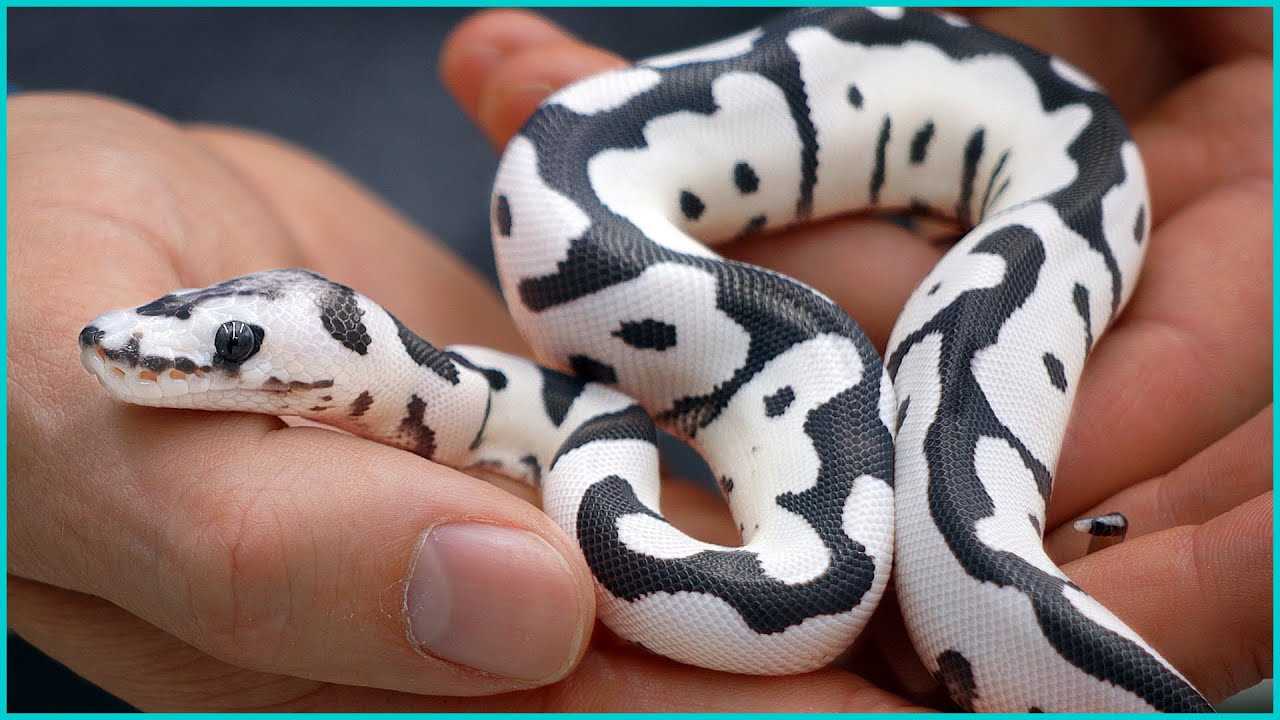
The Axanthic Clown Ball Python is a fascinating and unique morph of the ball python species. With its striking coloration and patterns, it has become highly sought after by reptile enthusiasts and collectors alike. The combination of axanthic and clown genes gives this python a mesmerizing appearance, making it a true gem in the world of herpetoculture.
The axanthic gene is responsible for the absence of yellow pigment in the python’s scales, giving it a black and white or silver appearance. Coupled with the clown gene, which creates beautiful patterns and markings on the snake’s body, the axanthic clown ball python is a sight to behold. Each snake displays a one-of-a-kind pattern, making them even more desirable to snake lovers.
Origins and History
The Axanthic Clown Ball Python is a captivating reptile that has gained popularity among snake enthusiasts. It is a unique morph of the Ball Python, which is known for its gentle nature and striking appearance. The Axanthic gene is responsible for the snake’s lack of yellow pigment, resulting in its predominantly black and white coloration.
The Axanthic morph was originally discovered in the late 1990s, and its popularity quickly grew among reptile enthusiasts and breeders. The term “axanthic” refers to the absence of yellow pigmentation, resulting in a black and white coloration. The gene responsible for this morph is recessive, meaning both parents must carry the gene for it to be expressed in the offspring. When paired with the Clown morph, another popular ball python morph, it creates a visually striking and highly sought-after combination.
The Clown gene, on the other hand, is responsible for the snake’s unique pattern and distinct markings. It causes interruptions in the snake’s normal patterning, resulting in bold patches and striping. When combined with the Axanthic gene, it creates a snake with a stunning black and white pattern, often resembling the markings of a clown’s face.
Through selective breeding, breeders have been able to produce various combinations of the Axanthic and Clown genes, resulting in a wide range of patterns and colorations. These snakes are highly prized among reptile enthusiasts and collectors alike.
The Popularity and Market Value
The Axanthic Clown Ball Python has become highly sought after in the reptile market. Due to its captivating appearance and rarity, these snakes often command high prices. The cost of an Axanthic Clown Ball Python can vary depending on factors such as age, size, and specific coloration. On average, you can expect to pay several hundred to a few thousand dollars for a high-quality specimen.
Appearance and Characteristics of Axanthic Clown Ball Python
The Axanthic Clown Ball Python showcases a unique and striking appearance that sets it apart from other snake species. This beautiful morph is the result of combining the axanthic gene with the clown gene, resulting in a mesmerizing color and pattern combination.
The axanthic gene is responsible for the absence of yellow and orange pigmentation in the snake’s skin, giving it a stunning grayscale appearance. The clown gene, on the other hand, introduces vibrant and contrasting patterns, featuring bold white and black stripes and spots.
These two genes together create a visually captivating snake with a black and white base coloration, adorned with intricate patterns that vary from snake to snake. The patterns may include wide bands, circles, and even incomplete or broken stripes, making each Axanthic Clown Ball Python truly unique.
Aside from its remarkable coloration, the Axanthic Clown Ball Python also boasts other characteristics that make it a popular choice among snake enthusiasts. This species typically has a slender built and a medium size, with males averaging around 3-4 feet and females reaching up to 4-5 feet in length.
In terms of lifespan, these pythons can live for over 20 years when properly cared for, making them a long-term commitment. They require a specialized diet consisting of appropriately-sized rodents, such as mice and rats, to meet their nutritional needs.
Overall, the Axanthic Clown Ball Python is a captivating and unique snake species that offers beauty and charm to any reptile enthusiast’s collection.
| Appearance | Characteristics |
|---|---|
| Grayscale coloration | Docile and calm temperament |
| Contrasting white and black patterns | Medium-sized and slender build |
| Variety of patterns including bands and circles | Lifespan of over 20 years |
| Unique and captivating | Specialized diet of rodents |
When the Axanthic and Clown genes are combined, they create a mesmerizing snake with a unique coloration and pattern. The Axanthic Clown Ball Python typically has a light gray or silver base color, with intricate patterns of black or dark gray markings.
Breeders have been working on stabilizing and refining the Axanthic Clown morph, resulting in increasingly vibrant and striking individuals. Each generation brings improvements in pattern clarity and color intensity, making them highly desirable among snake enthusiasts.
In terms of inheritance, the Axanthic gene follows a recessive pattern. To produce Axanthic offspring, both parents must carry at least one copy of the gene. This means that breeding two Axanthic Clown Ball Pythons together will result in a clutch of Axanthic Clown offspring.
Caring for an Axanthic Clown Ball Python is similar to caring for other Ball Python morphs. They require appropriate housing, a balanced diet, and regular veterinary check-ups. It’s crucial to provide them with the right temperature, humidity, and a suitable enclosure that mimics their natural habitat.
Clown Gene in Axanthic Clown Ball Pythons
The clown gene is responsible for the distinct and vibrant patterns seen in axanthic clown ball pythons. It causes a reduction in melanin production, resulting in lightened colors and vivid markings. This gene produces variations in color and pattern, making each axanthic clown python truly one-of-a-kind.
When the axanthic gene and the clown gene are both present in an individual snake, it creates a mesmerizing combination. The axanthic gene lightens the overall color, while the clown gene introduces bold and intricate patterns. This results in a stunning snake with a visually striking appearance.
The clown gene can have different effects on the overall appearance of the axanthic python. Some axanthic clown pythons may have vivid yellow or orange patterns against a dark background, while others may have vibrant white and silver markings. The specific coloration and pattern can vary from snake to snake, creating a captivating array of possibilities.
When caring for an axanthic clown ball python with the clown gene, it’s essential to provide proper housing, nutrition, and environmental conditions. These snakes require a spacious enclosure with appropriate temperature and lighting settings. Additionally, a healthy and balanced diet consisting of appropriately-sized prey items is crucial for their well-being.
Axanthic Clown Ball Python Breeding
The breeding of axanthic clown ball pythons is a fascinating process that involves careful selection and pairing of suitable individuals. Breeding axanthic and clown morphs together can produce offspring with beautiful and unique patterns and colors.
Before introducing the male and female together, it is recommended to give them a cooling period. This cooling period mimics the natural seasonal changes and triggers the breeding behavior. The snakes should be kept at temperatures slightly lower than usual for about two months. During this time, the snakes’ feeding should be reduced or stopped to prepare them for breeding.
The eggs should be carefully removed from the enclosure and placed in an incubator with suitable temperature and humidity levels. It usually takes around 60 days for the eggs to hatch, and the hatchlings should be kept in a separate enclosure with appropriate heating and feeding until they are ready to be sold or kept as pets.
Breeding axanthic clown ball pythons requires patience and expertise, as it involves monitoring the health and conditions of the snakes, managing proper breeding cycles, and providing appropriate care for the eggs and hatchlings. However, the reward of producing unique and beautiful offspring makes the breeding process truly rewarding for snake enthusiasts.
Temperament and Handling
The Axanthic Clown Ball Python is known for its calm and docile temperament, making it a great choice for snake enthusiasts of all levels of experience. This snake is generally easy to handle and rarely displays aggressive behavior.
When picking up the Axanthic Clown Ball Python, it’s best to support its body and avoid grabbing it by the tail. Snakes rely on their muscles along their body for movement, and grabbing the snake by the tail can cause stress and potential injury.
Safety Precautions for Handling
Although the Axanthic Clown Ball Python is generally considered safe to handle, there are a few safety precautions that should be followed:
- Never handle the snake if you are feeling unwell or have open wounds.
- Avoid sudden movements or loud noises that may startle the snake.
- Always supervise children when handling the snake to prevent any accidental harm to the snake or the child.
- Be mindful of the snake’s body language. If it appears tense, defensive, or agitated, it may not be the best time for handling.
- Never handle the snake during or shortly after feeding, as this can cause regurgitation or other digestive issues.
Overall, with proper handling and care, the Axanthic Clown Ball Python can be an excellent pet and a fascinating addition to any snake collection.
Feeding and Nutrition
Feeding and nutrition are crucial aspects of caring for your axanthic clown ball python. As a responsible pet owner, it is essential to provide a balanced and appropriate diet to ensure the snake’s overall health and well-being.
What Do Axanthic Clown Ball Pythons Eat?
It is recommended to feed your axanthic clown ball python once every 1-2 weeks, depending on its age and size. Younger snakes may require more frequent feedings, while adult snakes may eat less frequently. Providing prey items that are appropriately sized will prevent any health problems that may arise from overfeeding or underfeeding.
Feeding Techniques
When feeding your axanthic clown ball python, it is essential to use appropriate feeding techniques to ensure the snake’s safety. One common technique is to use pre-killed or frozen-thawed rodents. These prey items are readily available from pet stores and are safer for both you and your snake.
Before offering the prey item to your snake, ensure that it is fully thawed and warmed to about the snake’s body temperature. You can use warm water or a heat source to achieve the desired temperature. The prey should be presented using feeding tongs or tweezers to mimic natural hunting behavior.
Supplements
In addition to their regular diet of mice or rats, axanthic clown ball pythons may require additional supplementation to ensure they receive all the necessary vitamins and minerals. Supplements such as calcium powder or vitamin D3 can be dusted onto the prey item before feeding.
It is crucial to follow the recommended dosage instructions provided by a reptile veterinarian or an experienced breeder. Over-supplementation can lead to health problems, so it is best to consult an expert to determine the appropriate amount and frequency of supplementation.
Water
Providing clean and fresh water is essential for the overall health and hydration of your axanthic clown ball python. A shallow dish filled with water should be available at all times to allow the snake to soak and drink as needed.
Make sure to clean the water dish regularly and replace the water to prevent any bacterial growth. The dish should be large enough for the snake to comfortably fit in and easily access the water.
Conclusion
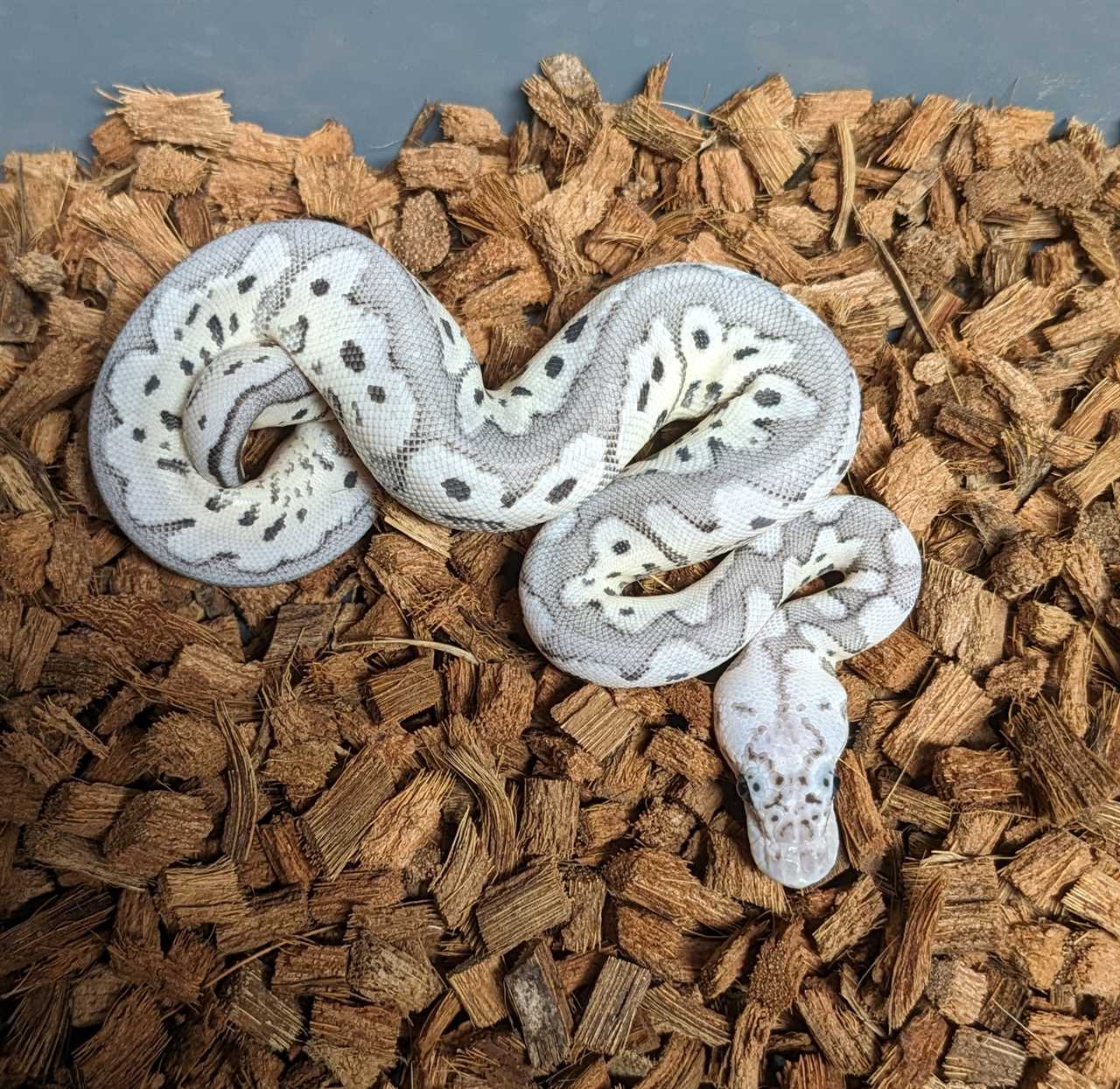
Feeding and nutrition play a vital role in keeping your axanthic clown ball python healthy and thriving. Providing a balanced diet of appropriately sized prey items, using proper feeding techniques, and considering necessary supplementation will ensure your snake receives the nutrients it needs to live a long and healthy life. However, it is always recommended to consult with a reptile veterinarian or an experienced breeder for personalized advice regarding the specific dietary needs of your axanthic clown ball python.
Housing and Enclosure
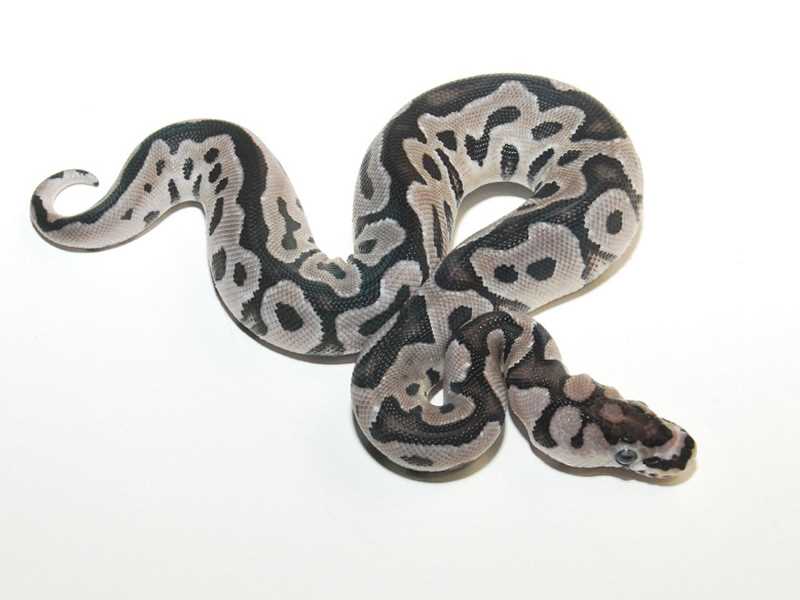
Proper housing and enclosure are essential for the well-being of axanthic clown ball pythons. These snakes require a spacious and secure enclosure that mimics their natural habitat.
The enclosure should also have a temperature gradient, providing a warm and a cool side. The warm side should have a temperature range between 85-90°F (29-32°C), while the cool side should be around 75-80°F (24-27°C). This temperature gradient allows the snake to regulate its body temperature by moving between the warmer and cooler areas of the enclosure.
The enclosure should also include hiding spots, such as reptile caves or half logs, where the snake can feel secure. These hiding spots should be placed on both the warm and cool sides of the enclosure to allow the snake to thermoregulate.
Cleanliness is crucial for the health of axanthic clown ball pythons. The enclosure should be spot-cleaned regularly to remove any waste or soiled substrate. A complete enclosure clean should also be done every few months using a reptile-safe disinfectant.
In summary, providing a suitable housing and enclosure for axanthic clown ball pythons is crucial for their well-being. This includes a secure and properly-sized enclosure, a temperature gradient, appropriate substrate, hiding spots, and enrichment items. Regular cleaning and maintenance are also important to ensure the snake’s health and happiness.
Lighting and Temperature
Proper lighting and temperature are crucial for the health and well-being of an axanthic clown ball python. These reptiles require a warm and consistent environment to thrive.
Lighting
While axanthic clown ball pythons do not require UVB lighting, providing a light source that mimics a natural day-night cycle can be beneficial. This helps regulate their circadian rhythm and provides them with a sense of time.
It is recommended to use a low-wattage incandescent bulb or a ceramic heat emitter for daytime lighting. This will provide a gentle source of heat without disturbing the snake’s sleep patterns.
Temperature
Axanthic clown ball pythons require a temperature gradient in their enclosure, allowing them to thermoregulate. The optimal temperature range should be maintained between 75 to 85°F (24 to 29°C) on the cool side and 85 to 90°F (29 to 32°C) on the warm side.
To achieve this temperature gradient, it is essential to use appropriate heat sources such as a heat mat, heat tape, or a ceramic heat emitter. These should be placed on one side of the enclosure to create a warm basking spot. Using a thermostat is highly recommended to regulate the heat source and prevent overheating.
It’s equally important to provide a cool hide on the cool side of the enclosure and a warm hide on the warm side. This allows the snake to choose the temperature that suits their needs at any given time.
Regularly monitor the temperature with a reliable thermometer and make necessary adjustments to maintain the appropriate temperature range. Avoid significant temperature fluctuations, as this can negatively impact the snake’s health.
Substrate and Habitat
The substrate and habitat of an axanthic clown ball python are important factors to consider when creating a suitable environment for these snakes. The substrate refers to the material that lines the bottom of the enclosure, while the habitat refers to the overall living conditions provided for the python.
Substrate
Habitat
The habitat for an axanthic clown ball python should mimic their natural environment as closely as possible. This means providing a secure enclosure with adequate hiding spots, temperature gradients, and humidity levels.
The enclosure should be large enough to accommodate the python comfortably, allowing for adequate movement and stretching. It’s also important to provide a secure lid or top to prevent escapes.
Temperature gradients should be created within the enclosure, with a warm side and a cooler side. This allows the python to regulate its body temperature by moving between different temperature zones. The warm side should have a temperature range of 85-90°F (29-32°C), while the cooler side should be around 78-82°F (25-28°C).
Humidity levels between 50-60% should be maintained within the enclosure. This can be achieved by misting the enclosure with water regularly and providing a humidity hide, such as a moistened sphagnum moss-filled hide box.
- Choose a suitable substrate, such as cypress mulch, aspen bedding, or reptile carpet.
- Avoid substrates that emit harmful fumes, such as cedar or pine shavings.
- Maintain a clean and dry substrate to prevent respiratory issues.
- Create a habitat that mimics the python’s natural environment.
- Provide a secure enclosure with adequate hiding spots and temperature gradients.
- Ensure temperature gradients with a warm side (85-90°F) and a cooler side (78-82°F).
- Maintain humidity levels between 50-60% through misting and providing a humidity hide.
- Provide appropriate lighting, avoiding bright and harsh lights at night.
By carefully considering the substrate and habitat needs of an axanthic clown ball python, you can create a comfortable and suitable environment for your pet snake.
Health and Care
Veterinary Care
Regular veterinary check-ups are essential for the overall health of your python. Find a reptile veterinarian who is experienced in working with ball pythons and have your snake examined at least once a year. This will allow the vet to catch any potential health issues early on and provide necessary treatment.
During these check-ups, your vet will perform a physical examination, check for any signs of illness or parasites, and may recommend additional tests if needed. They will also provide guidance on proper nutrition, habitat conditions, and handling techniques to ensure the best possible care for your python.
Diet and Nutrition
It’s also crucial to provide your python with proper hydration. Always have a fresh water bowl available in the enclosure, and mist the enclosure daily to maintain the correct humidity levels.
Habitat and Enclosure
Creating the perfect habitat for your Axanthic Clown Ball Python is essential for their well-being. The enclosure should be spacious enough to allow the snake to move around comfortably but not so large that it becomes overwhelming for the snake.
Axanthic Clown Ball Pythons are primarily nocturnal and require a day-night cycle to maintain their natural behavior. Use a light source to provide a day-night cycle, but make sure to provide plenty of hiding spots where the snake can retreat during the day.
The substrate in the enclosure should be safe and easy to clean. Options such as aspen bedding, cypress mulch, or reptile carpet are all suitable choices.
Regular cleaning and maintenance of the enclosure are necessary to prevent the buildup of bacteria or parasites. Spot-clean any waste or soiled areas daily, and fully clean and disinfect the enclosure at least once a month.
Handling and Temperament
When handling your python, always approach them calmly and confidently. Make sure your hands are clean and free of any strong smells that might startle the snake.
Support the snake’s body fully, and never pull or tug on them. Let the snake crawl freely over your hands and arms, but be mindful of their behavior. If your snake shows signs of stress or discomfort, such as hissing or coiling, gently put them back in their enclosure and try handling them at another time.
It’s also important to wash your hands thoroughly both before and after handling your python to avoid the risk of spreading any potential bacteria or diseases.
By providing proper care, nutrition, and attention to your Axanthic Clown Ball Python, you can ensure a happy and healthy life for your pet snake.
Axanthic Clown Ball Python Lifespan and Size
The Axanthic Clown Ball Python is a beautiful and fascinating snake with a relatively long lifespan. On average, these pythons can live anywhere from 20 to 30 years in captivity if properly cared for. However, some individuals have been known to live even longer, reaching ages of 35 years or more.
Common Diseases in Axanthic Clown Ball Python
1. Respiratory Infections: Respiratory infections are common in ball pythons, including the axanthic clown variety. They can be caused by bacteria, viruses, or fungi, and may present with symptoms such as wheezing, difficulty breathing, nasal discharge, and loss of appetite. Prompt veterinary attention is crucial to treat respiratory infections.
2. Scale Rot: Scale rot is a bacterial infection that affects the scales of the snake, usually due to poor hygiene or damp living conditions. It can cause the scales to become discolored, scaly, and eventually lead to skin ulcers or blisters. Regular cleaning of the enclosure and maintaining appropriate humidity levels can help prevent scale rot.
3. Mouth Rot: Mouth rot, or infectious stomatitis, is a bacterial infection that affects the snake’s mouth and gums. It can be caused by poor oral hygiene, trauma, or a weakened immune system. Symptoms may include swollen gums, discharge, and difficulty eating. Regular dental hygiene and monitoring of the snake’s oral health are important to prevent and treat mouth rot.
4. Parasites: Internal and external parasites, such as mites or ticks, can infest axanthic clown ball pythons. These parasites can cause irritation, skin problems, and even transmit diseases. Regular veterinary check-ups and proper hygiene practices can help prevent and treat parasitic infestations.
When to Seek Veterinary Care
- Loss of appetite or refusal to eat
- Unexplained weight loss or gain
- Abnormal feces or urates
- Lethargy or lack of activity
- Abnormal shedding
- Open mouth breathing, wheezing, or discharge from the nostrils
- Swollen or discolored scales
- Unusual behavior or aggression
Treatment and Prevention
| Disease | Symptoms | Treatment |
|---|---|---|
| Respiratory Infections | Wheezing, difficulty breathing, nasal discharge, loss of appetite | Antibiotics, supportive care |
| Scale Rot | Discolored scales, scaly skin, skin ulcers or blisters | Clean and disinfect enclosure, topical ointments, improve hygiene |
| Mouth Rot | Swollen gums, discharge, difficulty eating | Antibiotics, oral hygiene, supportive care |
| Parasites | Itching, irritation, skin problems | Parasite treatments, clean and disinfect enclosure |
| Obesity | Weight gain, heart problems, metabolic disorders | Diet modification, exercise, monitoring weight |
Proper care, hygiene, and staying vigilant for any signs of illness are key to keeping axanthic clown ball pythons healthy and happy for many years to come.
Availability and Cost
The Axanthic Clown Ball Python is a highly sought-after snake in the reptile pet trade. Due to its unique and captivating appearance, it can be quite difficult to find and purchase. Breeders who specialize in producing this particular morph are often in high demand, and their snakes can sell quickly.
The cost of an Axanthic Clown Ball Python can vary depending on several factors. These include the snake’s age, size, genetics, and overall quality. Generally, younger snakes are less expensive than adults, and prices can range from a few hundred dollars to several thousand.
If you’re interested in adding an Axanthic Clown Ball Python to your reptile collection, it’s recommended to do thorough research and find a reputable breeder. A reputable breeder will provide you with a healthy and well-cared-for snake and can offer guidance on proper care and husbandry.
Before acquiring an Axanthic Clown Ball Python, it is crucial to research and understand the laws and regulations in your area. This can help ensure that you are abiding by the law and avoid any potential legal issues.
Permits and Licenses
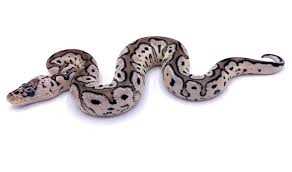
In some places, individuals may be required to obtain permits or licenses in order to legally keep certain types of reptiles, including pythons. These permits or licenses often come with specific requirements, such as proper housing, enclosures, and safety measures. It may also be necessary to provide documentation of the origin and legality of the snake.
Transport and Shipping Regulations
When purchasing an Axanthic Clown Ball Python, it is essential to be aware of any transport and shipping regulations that may apply. Some areas may have restrictions on the transportation or shipping of live reptiles, including pythons.
If you plan on purchasing an Axanthic Clown Ball Python from a breeder or seller in a different location, it is advisable to research the relevant rules and regulations regarding the transportation of live animals. This can help ensure a safe and legal transport for the snake.
Illegal Import and Export
Before attempting to import or export an Axanthic Clown Ball Python, it is crucial to understand and comply with any international or national regulations that may apply. Failing to do so can result in severe consequences, including fines and legal penalties.
Responsible Ownership
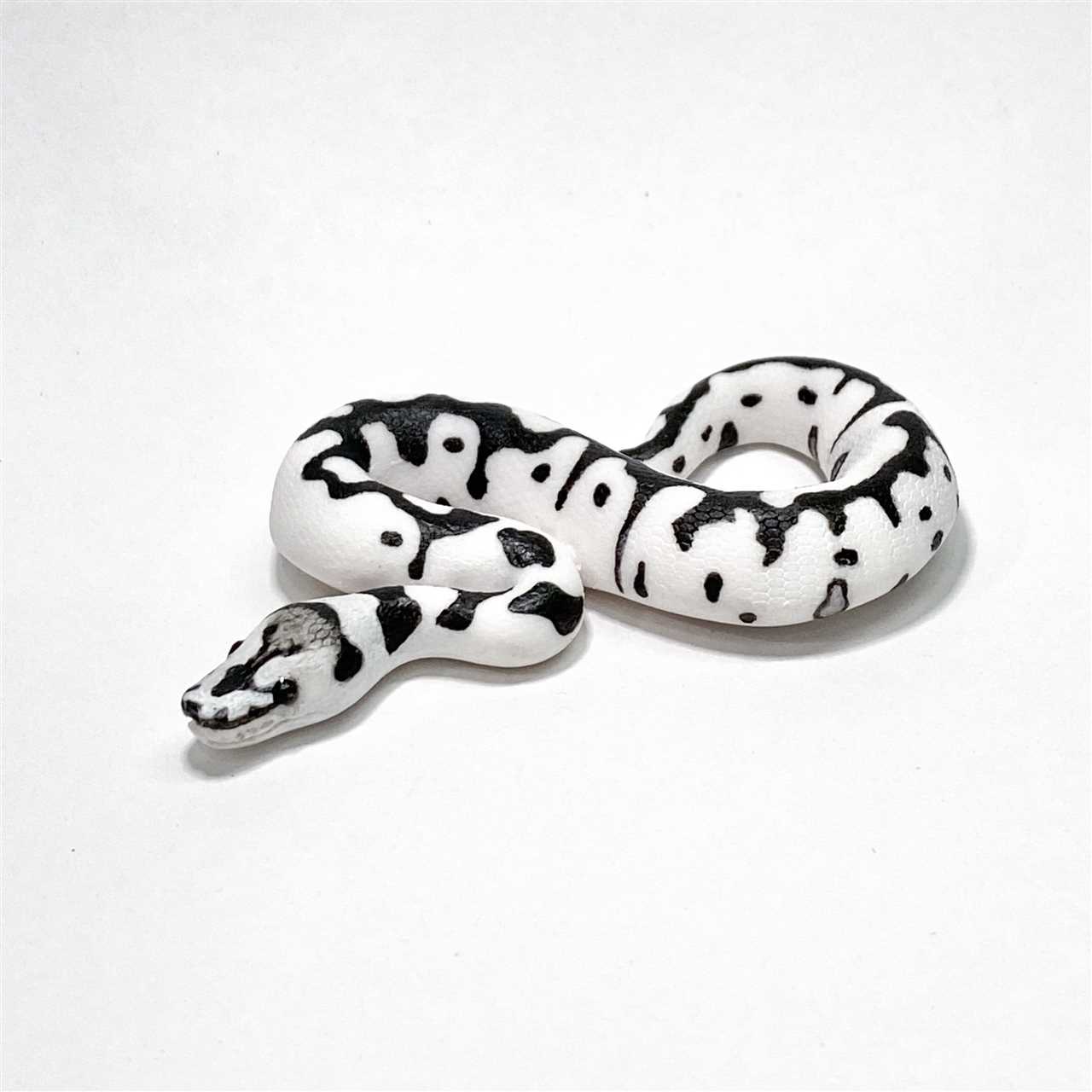
Regardless of the regulations and laws in your area, it is always important to be a responsible owner when keeping an Axanthic Clown Ball Python as a pet. This includes providing appropriate care, handling the snake safely, and ensuring that the proper housing and enclosure requirements are met.
Additionally, it is crucial to consider the potential impact of releasing a captive-bred snake into the wild. Releasing any non-native snake species, even if it is legally owned, can have detrimental effects on local ecosystems and native wildlife.
Axanthic Clown Ball Python as a Pet
If you are considering getting a pet snake, the Axanthic Clown Ball Python may be the perfect choice for you. This striking snake possesses a unique combination of the axanthic and clown genes, resulting in a visually stunning appearance.
The Axanthic Clown Ball Python is known for its beautiful coloration, which includes a dark base color with light yellow or white markings. The axanthic gene removes the typical yellow pigment, resulting in a more subdued coloration. The clown gene adds a beautiful pattern of light-colored markings, creating a mesmerizing effect.
Feeding and nutrition are crucial aspects of caring for an Axanthic Clown Ball Python. These snakes are carnivores, and their diet mainly consists of appropriately sized mice or rats. It is essential to provide a balanced and varied diet to ensure their overall health and well-being.
As with any pet, the health and care of an Axanthic Clown Ball Python should be a priority. Regular veterinary check-ups, proper hygiene, and monitoring for any signs of illness are crucial to maintaining their well-being. Additionally, providing a clean and suitable habitat is essential for their overall health and happiness.
Common diseases that can affect Axanthic Clown Ball Pythons include respiratory infections, stomatitis, and parasites. It is crucial to be proactive in preventing these diseases by maintaining proper hygiene, providing a suitable habitat, and seeking veterinary care when needed.

I’m Lena Adams—a product of an unconventional upbringing in the African wilderness. My father, a daring explorer of African wildlife, sparked my fascination with reptiles, a passion that intertwined with the tragic loss of my mother during an expedition, leaving an indelible mark on my life. Driven to understand the creatures that captivated my parents, I embarked on my journey, sharing insights about reptiles, frogs, and lizards on my website. Through my explorations and conservation efforts, I honour my family’s legacy while seeking connections—to the creatures, nature, and the mother whose presence I yearn to understand.
